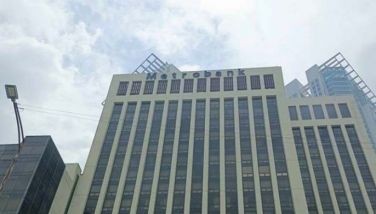ING sees 5% GDP growth
January 23, 2006 | 12:00am
The country’s gross domestic product (GDP) is forecast to grow by a modest five percent this year while inflation will ease in the second half, an international investment firm noted.
According to ING Bank officials the key drivers for growth are the services sector, the full implementation of fiscal reforms, and a more resilient corporate sector.
The main risk factors, on the other hand, are noise in the political arena, poor implementation of the fiscal reforms with emphasis on the 12-percent value added tax, and unstable world oil prices.
"Inflation will peak in the first quarter of the year, and it should ease to the five percent level by the second semester," said Paul Joseph M. Garcia, ING Bank chief investment officer.
Inflation will ease to 5.8 percent by the end of the year, much better than the seven-percent range in 2005.
Garcia added that they expect the peso to remain strong, stabilizing at the 53 to the dollar range.
After several years of clamped public expenditures, the National Government is also seen to become "expansionary" that is, engage in more public spending especially in infrastructure to pump-prime the economy.
The Bangko Sentral ng Pilipinas (BSP) will likely remain in a neutral mode with regard to policy rates in 2006. The movement of key lending rates will however be dependent on the US Federal Reserve actions, inflation in the first six months of the year, and world oil prices.
Meanwhile, ING Bank lauded the country’s monetary officials for successfully launching several debt instruments.
This year, the investment bank expects the equities market to outperform the bond market. "The peso stability is a key factor to a better equities market, as well as news of better fiscal position of the National Government, and continued investor confidence" Garcia said.
According to ING Bank officials the key drivers for growth are the services sector, the full implementation of fiscal reforms, and a more resilient corporate sector.
The main risk factors, on the other hand, are noise in the political arena, poor implementation of the fiscal reforms with emphasis on the 12-percent value added tax, and unstable world oil prices.
"Inflation will peak in the first quarter of the year, and it should ease to the five percent level by the second semester," said Paul Joseph M. Garcia, ING Bank chief investment officer.
Inflation will ease to 5.8 percent by the end of the year, much better than the seven-percent range in 2005.
Garcia added that they expect the peso to remain strong, stabilizing at the 53 to the dollar range.
After several years of clamped public expenditures, the National Government is also seen to become "expansionary" that is, engage in more public spending especially in infrastructure to pump-prime the economy.
The Bangko Sentral ng Pilipinas (BSP) will likely remain in a neutral mode with regard to policy rates in 2006. The movement of key lending rates will however be dependent on the US Federal Reserve actions, inflation in the first six months of the year, and world oil prices.
Meanwhile, ING Bank lauded the country’s monetary officials for successfully launching several debt instruments.
This year, the investment bank expects the equities market to outperform the bond market. "The peso stability is a key factor to a better equities market, as well as news of better fiscal position of the National Government, and continued investor confidence" Garcia said.
BrandSpace Articles
<
>
- Latest
- Trending
Trending
Latest
Trending
Latest
Recommended




























